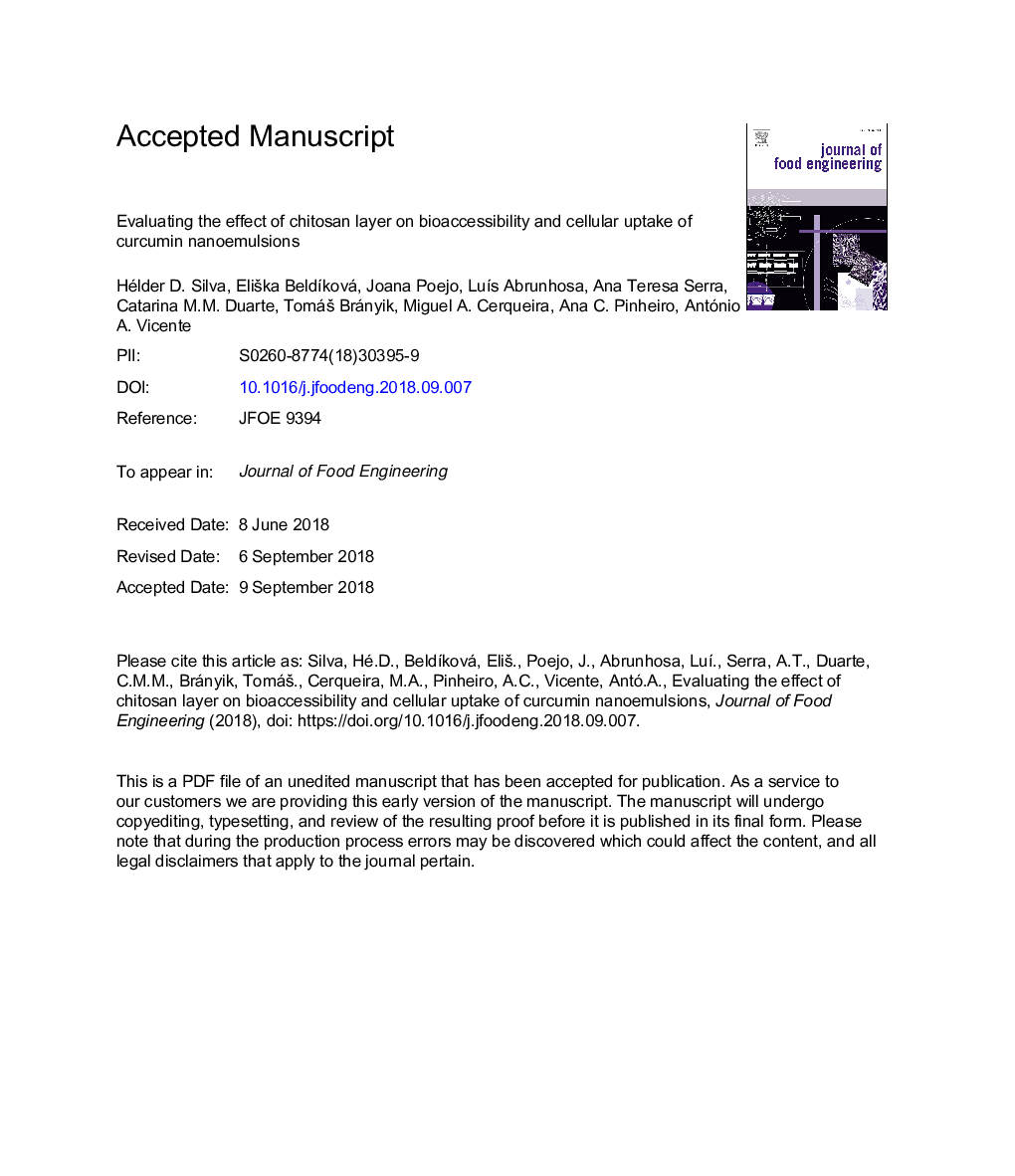| Article ID | Journal | Published Year | Pages | File Type |
|---|---|---|---|---|
| 10145641 | Journal of Food Engineering | 2019 | 54 Pages |
Abstract
Curcumin nanoemulsions stabilized by whey protein isolate were successfully developed using high-pressure homogenization. The effect of a chitosan layer deposition using the layer-by-layer technique on nanoemulsions' stability was evaluated during storage conditions, as well as during gastrointestinal tract passage. Lipids' hydrolysis and curcumin bioaccessibility was assessed using a dynamic gastrointestinal model (simulating the stomach, duodenum, jejunum and ileum) and the cytotoxicity, cellular antioxidant activity and permeability analyses were carried out using Caco-2â¯cells. Results showed that both nanosystems were stable during one month of storage and at stomach pH conditions, whereas creaming and phase separation occurred at intestine pH conditions. The addition of a chitosan layer increased curcumin bioaccessibility, whereas cellular antioxidant activity studies revealed that nanoemulsions and multilayer nanoemulsions exhibited 9 and 10 times higher antioxidant capacity at the cellular level, respectively, when compared to free curcumin. Permeability assays showed that the use of a chitosan layer significantly increased the apparent permeability coefficient of curcumin through Caco-2â¯cells by 1.55-folds.
Keywords
Related Topics
Physical Sciences and Engineering
Chemical Engineering
Chemical Engineering (General)
Authors
Hélder D. Silva, EliÅ¡ka BeldÃková, Joana Poejo, LuÃs Abrunhosa, Ana Teresa Serra, Catarina M.M. Duarte, TomáÅ¡ Brányik, Miguel A. Cerqueira, Ana C. Pinheiro, António A. Vicente,
